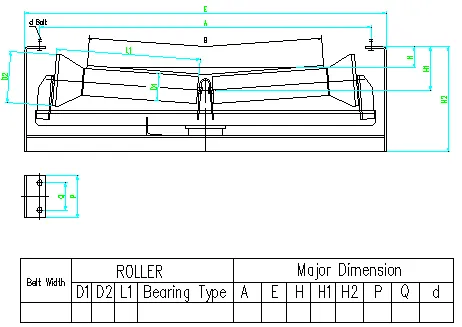 Afrikaans
Afrikaans  Albanian
Albanian  Amharic
Amharic  Arabic
Arabic  Armenian
Armenian  Azerbaijani
Azerbaijani  Basque
Basque  Belarusian
Belarusian  Bengali
Bengali  Bosnian
Bosnian  Bulgarian
Bulgarian  Catalan
Catalan  Cebuano
Cebuano  Corsican
Corsican  Croatian
Croatian  Czech
Czech  Danish
Danish  Dutch
Dutch  English
English  Esperanto
Esperanto  Estonian
Estonian  Finnish
Finnish  French
French  Frisian
Frisian  Galician
Galician  Georgian
Georgian  German
German  Greek
Greek  Gujarati
Gujarati  Haitian Creole
Haitian Creole  hausa
hausa  hawaiian
hawaiian  Hebrew
Hebrew  Hindi
Hindi  Miao
Miao  Hungarian
Hungarian  Icelandic
Icelandic  igbo
igbo  Indonesian
Indonesian  irish
irish  Italian
Italian  Japanese
Japanese  Javanese
Javanese  Kannada
Kannada  kazakh
kazakh  Khmer
Khmer  Rwandese
Rwandese  Korean
Korean  Kurdish
Kurdish  Kyrgyz
Kyrgyz  Lao
Lao  Latin
Latin  Latvian
Latvian  Lithuanian
Lithuanian  Luxembourgish
Luxembourgish  Macedonian
Macedonian  Malgashi
Malgashi  Malay
Malay  Malayalam
Malayalam  Maltese
Maltese  Maori
Maori  Marathi
Marathi  Mongolian
Mongolian  Myanmar
Myanmar  Nepali
Nepali  Norwegian
Norwegian  Norwegian
Norwegian  Occitan
Occitan  Pashto
Pashto  Persian
Persian  Polish
Polish  Portuguese
Portuguese  Punjabi
Punjabi  Romanian
Romanian  Russian
Russian  Samoan
Samoan  Scottish Gaelic
Scottish Gaelic  Serbian
Serbian  Sesotho
Sesotho  Shona
Shona  Sindhi
Sindhi  Sinhala
Sinhala  Slovak
Slovak  Slovenian
Slovenian  Somali
Somali  Spanish
Spanish  Sundanese
Sundanese  Swahili
Swahili  Swedish
Swedish  Tagalog
Tagalog  Tajik
Tajik  Tamil
Tamil  Tatar
Tatar  Telugu
Telugu  Thai
Thai  Turkish
Turkish  Turkmen
Turkmen  Ukrainian
Ukrainian  Urdu
Urdu  Uighur
Uighur  Uzbek
Uzbek  Vietnamese
Vietnamese  Welsh
Welsh  Bantu
Bantu  Yiddish
Yiddish  Yoruba
Yoruba  Zulu
Zulu snub pulley in belt conveyor
The Role of Snub Pulleys in Belt Conveyors
Belt conveyors are an essential component in various industries, serving the crucial function of transporting materials efficiently from one point to another. An integral part of these systems is the snub pulley, a specialized type of pulley that enhances the performance and reliability of belt conveyor systems. This article delves into the definition, functionality, and advantages of snub pulleys in belt conveyors.
Understanding Snub Pulleys
A snub pulley is typically located close to the drive pulley in a belt conveyor system. Unlike standard pulleys that primarily serve as a support for the belt, snub pulleys are designed to redirect the belt and provide additional tension. They are generally mounted in a manner that allows them to apply pressure on the back side of the conveyor belt, increasing the friction between the belt and the drive pulley. This increase in friction is critical for effective belt tracking and smooth operation.
Functionality
The primary function of a snub pulley is to enhance belt tension. In any belt conveyor system, proper tension is vital to prevent slippage, which can lead to inefficiencies, increased wear and tear, and potential breakdowns. The snub pulley achieves this by adjusting the angle of contact between the belt and the drive pulley, allowing for better grip and alignment.
Moreover, the snub pulley can be beneficial in correcting belt misalignment, a common issue in conveyor systems. If a belt is not properly aligned, it can lead to uneven wear and more frequent maintenance needs. The strategic placement of a snub pulley can help to keep the belt centered on the conveyor system, reducing these risks.
Advantages of Snub Pulleys
snub pulley in belt conveyor

1. Increased Tension and Grip One of the most significant advantages of incorporating a snub pulley is the increase in belt tension it provides. This is particularly important in applications where heavy loads or steep inclines are involved. A snub pulley helps maintain adequate tension, thus preventing slippage and ensuring reliable operation.
2. Improved Belt Tracking Proper belt tracking is crucial for the longevity of the conveyor system. Snub pulleys help in realigning the belt when it begins to drift, minimizing the potential for uneven wear and enhancing overall efficiency. This tracking capability reduces downtime and maintenance costs.
3. Reduced Slippage The enhanced friction provided by the snub pulley means that the likelihood of slippage is significantly reduced. This can lead to increased throughput and productivity since the conveyor system operates more efficiently without interruptions.
4. Extended Belt Life By ensuring that the conveyor belt remains in proper alignment and reducing instances of slippage, snub pulleys contribute to the overall health and longevity of the belt. This reduces the frequency of replacements, saving on costs in the long run.
5. Versatility Snub pulleys can be used in a variety of conveyor applications, making them a versatile choice for many industries, from mining and construction to manufacturing and food processing. They can be tailored to specific needs, based on the requirements of the material being transported.
Conclusion
In summary, snub pulleys play a vital role in the efficiency and reliability of belt conveyor systems. By providing additional tension, improving belt tracking, and reducing slippage, they enhance the overall performance of conveyors across various industries. Their ability to extend the life of belts and decrease maintenance costs makes snub pulleys a valuable investment for businesses aiming to optimize their material handling processes. As industries continue to evolve, the importance of such components will only grow, highlighting the need for innovation and efficiency in conveyor systems.
-
Revolutionizing Conveyor Reliability with Advanced Rubber Lagging PulleysNewsJul.22,2025
-
Powering Precision and Durability with Expert Manufacturers of Conveyor ComponentsNewsJul.22,2025
-
Optimizing Conveyor Systems with Advanced Conveyor AccessoriesNewsJul.22,2025
-
Maximize Conveyor Efficiency with Quality Conveyor Idler PulleysNewsJul.22,2025
-
Future-Proof Your Conveyor System with High-Performance Polyurethane RollerNewsJul.22,2025
-
Driving Efficiency Forward with Quality Idlers and RollersNewsJul.22,2025





























